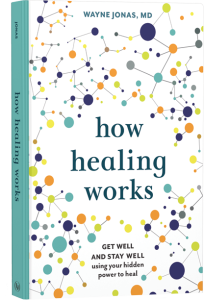If you have chronic pain, you’re not alone. An estimated 25.3 million adults in the United States report severe, daily pain, significantly more women than men, while 55 percent of U.S. adults report at least some pain in the past three months.
For women, the continual variation of hormonal levels through puberty, menstruation, pregnancy, and pre-and post-menopause contribute to this discrepancy in pain between the sexes. For instance, prior to puberty, there are no significant differences in the development of painful conditions between boys and girls. Afterward, the differences are dramatic, with women two to six times more likely to develop chronic pain conditions, such as headaches, irritable bowel syndrome, and fibromyalgia. There are also differences in pain levels and frequency after menopause.
The Menopausal Transition and Pain
Pain intensity tends to increase when estrogen levels are low and progesterone levels are high, as they tend to be during the second half of the menstrual cycle, possibly because there are more naturally occurring “feel good” chemicals in the brain when estrogen levels are high. You can imagine the evolutionary benefit of this: estrogen levels are highest during pregnancy and childbirth, thus providing some natural pain relief. Indeed, during pregnancy, when levels remain high and steady, studies indicate many pain conditions improve and pain sensitivity is lower.
Meanwhile, one interesting study found that women with TMJ reported less pain as pregnancy progressed (and estrogen levels rose) and more pain after surgical menopause (when estrogen levels plummet). There’s even a name for it: pregnancy-induced analgesia. In addition, reproductive hormones can also influence how well opioids and other pain relievers work.
Surprisingly, there is little research on the effects of the pre-menopause transition, called perimenopause, and menopause on pain severity and frequency. But we are beginning to learn.
The Different in Pain Before and After Menopause
One study of 101 women seen in a menopause clinic in Italy, all of whom had some form of chronic pain (headaches, fibromyalgia, arthritis, back, or abdominal pain), found that about 18 percent said their pain started after menopause; about 17 percent said it stopped after menopause; the rest said their pain that had begun prior to menopause continued after the transition. As might be expected with age, arthritic pain started or got worse after menopause in half the women.
Back Pain as it Relates to Menopause
Indeed, musculoskeletal pain, such as arthritis and back pain, have some connection to hormonal levels, with evidence showing that estrogen can affect the cartilage and fluid around the joints. This could explain why women tend to have more severe knee arthritis after menopause than men of a similar age. An analysis of seven studies also found a much greater prevalence of back pain during the perimenopausal period than either before or after menopause.
The Menopauses Effect on Pain
Another interesting finding is that women with high-intensity, high-frequency pain reported that their pain improved or remained stable after menopause, while those with low-intensity and less extended pain said it got worse. The authors of this study concluded that “menopause can act as a determinant in the evolution of painful conditions.” Translation: your pain may get better or worse after menopause, depending on its cause and severity.
One area where it might get worse is migraines. A recent study found that women were 60 percent more likely to experience 10 or more migraines a month during the perimenopausal period than before. It didn’t get any better after menopause; women reported their headaches’ frequency increased 76 percent.
Menopausal Pain Causes a Higher Risk for Opioid Use
Finally, a study presented at the 2017 North American Menopause Society annual meeting found that female veterans in the perimenopause phase were 85 percent more likely to be diagnosed with chronic pain than younger women. They were also more likely to be taking opioids. As the author concluded: “[These findings] support the idea that menopause transition may be an underrecognized period of risk for chronic pain, as well as for high-risk opioid use. We may be able to think of menopause as kind of a sentinel event in some way for more difficulty with experiencing these symptoms, or for management of these symptoms, or kind of just additional needs.” And those considerations, she said, should impact how clinicians deliver care to these women, “thinking about what it is that we’re really treating and how these treatment decisions affect health in the menopause transition and as women are aging.”
To learn more about the pain one might experience during menopause, check out this patient guide.
 Your Health Into Your Own Hands
Your Health Into Your Own Hands
Drawing on 40 years of research and patient care, Dr. Wayne Jonas explains how 80 percent of healing occurs organically and how to activate the healing process.

